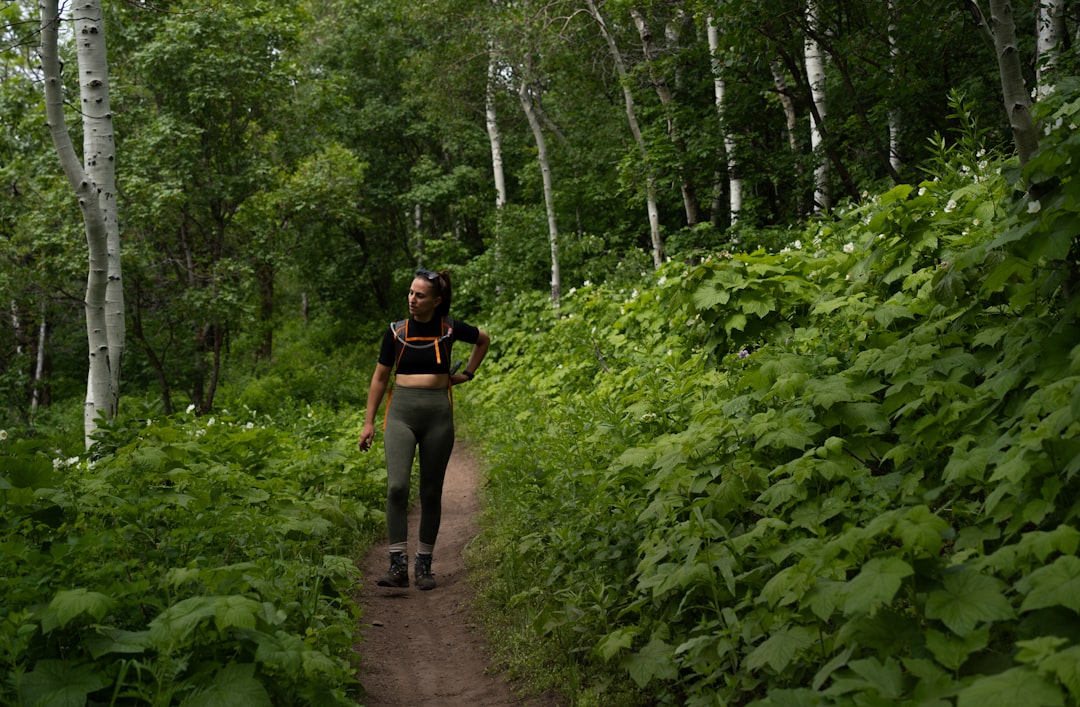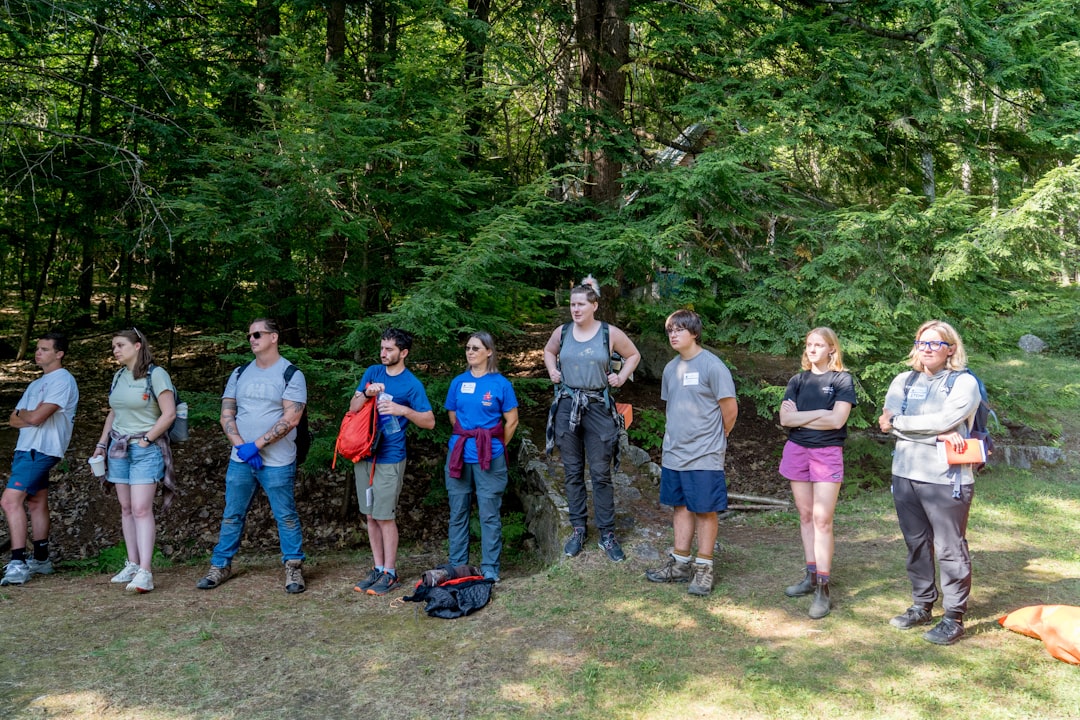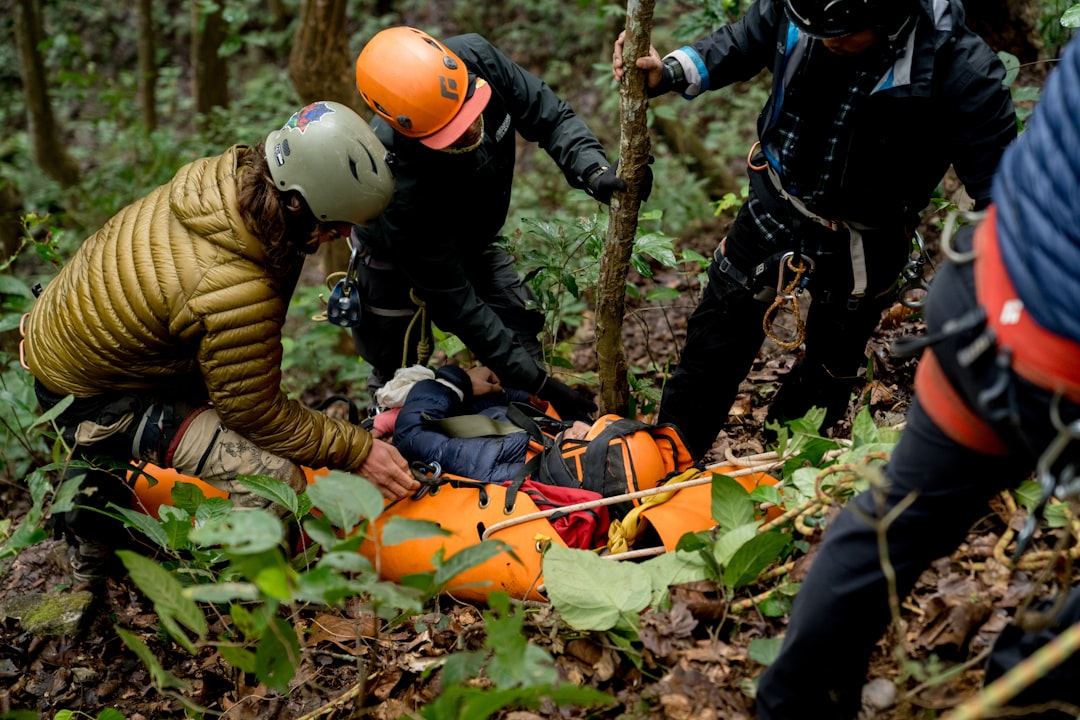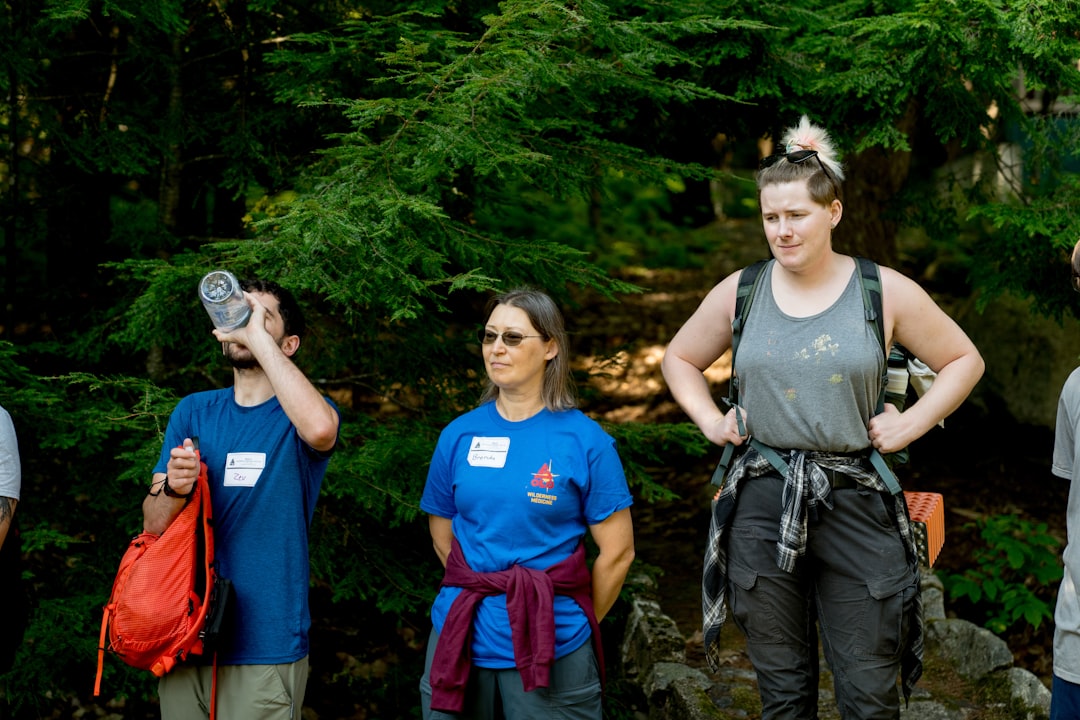

Engage prospects with a scan and streamline customer engagement with FREE QR code marketing tools by Sona – no strings attached!
Create a Free QR CodeFree consultation

No commitment

Engage prospects with a scan and streamline customer engagement with FREE QR code marketing tools by Sona – no strings attached!
Create a Free QR CodeFree consultation

No commitment
For organizations delivering wilderness survival training programs, collecting meaningful, real-time participant feedback has long been fraught with obstacles: from lost paper surveys to feedback gaps caused by remote field conditions. Many training providers find that high-value insights slip through the cracks when participant experiences are not documented in the moment. Without timely, actionable feedback, opportunities to refine curriculum or address pain points are missed, and program leaders are left working with incomplete or outdated data.
QR codes now offer a seamless way to close this visibility gap. By giving every outdoor classroom or trail-based activity a digital touchpoint, trainees and instructors can immediately share their experiences at the source, including insights from those who would otherwise pass by traditional methods. A simple scan captures candid sentiment, helps validate new teaching techniques, and encourages the sharing of testimonials or suggestions without logistical burdens.
This guide shows how embedded QR codes can be introduced across every stage of your wilderness survival curriculum. With this approach, you can overcome common obstacles that limit traditional feedback collection and leverage each scan for richer analytics, ongoing program improvement, and data-driven decision-making. Discover how strategic QR deployment can drive engagement and growth in survival skills education, whether your courses happen in remote forests, arid deserts, or urban training centers.

Collecting feedback during outdoor training presents unique hurdles. Participants rarely have time or incentive to fill out lengthy paper forms, and post-session emails are often ignored once trainees return to busy lives. This creates a blind spot for training providers, where high-value feedback and follow-up opportunities fail to reach your CRM. The result is missed insights, missed testimonials, and missed chances to re-engage motivated learners while their experience is fresh.
QR codes bridge this gap by enabling instant, location-based feedback via mobile. When a trainee scans a code posted near a fire-building station or on a navigation checkpoint sign, they can submit short forms or quick ratings in seconds, often via simple Google Forms. The engagement happens in context and in real time, which dramatically increases completion rates and the quality of qualitative responses. You also gain consistent attribution data for every scan: course name, module, instructor, and location.
Moving to dynamic QR workflows eliminates friction and manual data entry. It also turns every scan into a measurable step in the learner journey, making it easier to spot bottlenecks, validate new teaching techniques, and act on feedback faster than traditional methods ever could.

Wilderness programs operate in dispersed locations with varied schedules and inconsistent connectivity. Many interactions remain offline and untracked, which means leaders struggle to see which modules resonate, which instructors excel, and which environments produce the most engagement. Even motivated participants may skip a post-course email or forget to complete a survey once they hit the road, so valuable input never makes it back to your team.
Advanced QR code solutions change this dynamic by bringing speed, simplicity, and visibility to feedback collection. Trainees can scan without downloading an app and submit feedback during brief transitions between modules. Instructors can prompt engagement with quick calls to action, and administrators can update destinations on the fly without reprinting materials. With centralized analytics and clear attribution, you finally get a consistent picture of performance within and across courses. For additional tactics, explore QR codes in marketing.
By reducing friction and improving visibility, QR codes help wilderness training organizations uncover otherwise anonymous engagement. You can intervene quickly when sentiment dips, amplify success stories in marketing, and continuously evolve the curriculum with evidence rather than assumptions.

Wilderness programs operate across diverse contexts: remote campsites, pop-up events, and multi-day expeditions. The best QR formats are those that adapt to field conditions, deliver clear value in the moment, and keep content flexible over time. Dynamic QR codes are especially useful since you can update destinations as your courses evolve or as seasons change.
Below are format types and destinations that fit the rhythm of outdoor training and feedback:
Consider adding Wi-Fi access QR codes at basecamps where possible so trainees can quickly join a secure network to submit longer forms or download offline learning content. Use static codes for evergreen safety resources and dynamic codes for feedback, scheduling, and any content likely to change.

Not all placements perform equally. Disconnected campaigns and random placements can lead to inconsistent messaging and missed chances to guide trainees toward their next step. The key is to map QR deployments to the stages of the training journey and to the physical environments where attention is highest.
Look for moments of natural pause or transition: when trainees move between stations, pack up gear, or gather for briefings. These are ideal for scanning because attention is present and hands are free. Each placement should communicate a clear promise, such as helping the program improve, unlocking a bonus tip, or capturing a testimonial that inspires future cohorts.
Strategic placement not only increases scan volume but also improves data quality. You learn which courses, environments, and moments drive the most engagement, making it easier to refine the experience and allocate resources wisely.

Feedback is a lever for continuous improvement and growth, not just a box to check. When surfaced at the right moments, it reveals patterns across skill levels, sheds light on safety issues, and powers remarketing to alumni and prospects. The following use cases are practical starting points that combine learner value with program benefit.
Segment these interactions by course level, topic, and location so your dataset becomes a growth engine. When you tie scan behavior to follow-up workflows, you can nurture graduates into advanced courses and invite engaged participants to refer peers.
A core advantage of QR-enabled interactions is the ability to turn anonymous engagement into segmented, actionable audiences. Each code represents a distinct context, so you can automatically tag scans by course type, skill level, or geographic location. This turns scattered field activity into structured signals you can use to personalize outreach and allocate resources. Apply proven concepts from intent data to prioritize the right learners.
Think beyond a single survey. Use multiple codes throughout the learner journey so you can distinguish interest and intent. For example, a scan at a cold-weather survival module signals different interests than a scan at an urban navigation clinic. Over time, these signals help you identify likely advocates, alumni ready for advanced content, and prospects with a high propensity to enroll. For campaign ideas, explore intent-driven retargeting.
With every QR-enabled touch, you move from guessing who is engaged to knowing who is engaged and why. This allows you to retarget with precision through email, SMS, or paid ads, and to nurture learners into repeat enrollment or advocacy.
Wilderness programs thrive when offline and online experiences are connected. QR codes act as a bridge so that what happens around the campfire or in the field transitions smoothly into digital reflection, resource access, and continued learning. By placing scannable entry points across physical and digital assets, you create a unified journey that feels consistent and intentional.
This integration also unlocks better measurement. You can identify which brochures, signs, or videos drive the most interaction and segment audiences by behavior. Over time, a centralized approach makes it easier to maintain messaging consistency, reduce duplication, and prove the impact of offline placements on online actions.
A centralized platform like Sona QR helps you manage all codes, monitor performance, and sync scan data with your CRM and ad platforms. The result is a connected feedback loop where every channel reinforces learning outcomes and every scan contributes to a growing data asset.
QR code success is not accidental. It requires alignment between goals, placements, content, and measurement. Use the following steps to plan and execute an effective campaign that improves feedback quality and supports enrollment growth.
Start by defining exactly what you want to achieve. You might aim to increase end-of-day feedback completion rates, collect more graduation testimonials, or capture incident reports quickly and consistently. Be concrete about the outcome and how you will measure success.
If you operate multiple programs across seasons, define separate goals for each track. For example, spring survival basics may prioritize feedback volume while winter backcountry programs focus on incident reporting speed.
Choose between static and dynamic QR codes based on how often you need to update destinations and how much tracking you require. Most feedback initiatives benefit from dynamic codes because content evolves and attribution matters.
If you are unsure, start with dynamic codes for flexibility. Being able to change links without reprinting is a major advantage in field-based programs.
Design for rugged use. Outdoor environments introduce challenges like poor lighting, wet surfaces, and limited connectivity. Your QR assets must be built to withstand these realities while communicating value clearly.
Consider redundancy by placing the same code in a few nearby locations. If one sign gets splashed or obstructed, the backup ensures scannability.
Place codes where attention is highest and the prompt feels natural. Feedback is most reliable when it is tied to a specific activity and when the path to action is obvious.
Pair QR deployments with instructor scripts. A 10-second verbal prompt can dramatically increase scan rates, especially when coupled with a visible reward such as unlocking a pro tip or entry into a gear giveaway.
Once live, treat your deployment as a living system. Monitor scan volumes, completion rates, and qualitative feedback. Iterate on design, placement, and content based on what the data shows.
Over time, your QR ecosystem will get sharper and more resilient. The best programs institutionalize quarterly reviews to prune underperforming codes and double down on high-value placements.
QR campaigns are not one-and-done efforts. When you monitor performance and act on what you learn, every scan becomes a stepping stone toward higher quality programs and more engaged learners.
Feedback without attribution is a missed opportunity. When programs cannot tie input to specific instructors, modules, or cohorts, they are left with generic conclusions that are hard to act on. QR-enabled analytics change this by giving leaders a granular view of what is working and what needs attention. For measurement across channels, see Sona’s take on offline attribution.
Real-time tracking supports both rapid response and strategic planning. You can spot dips in satisfaction before they become systemic and celebrate standout instructors with evidence. At a higher level, scan and completion data inform resource allocation decisions, helping you invest in programs and locations with the highest impact. Sona is an AI-powered marketing platform that turns first-party data into revenue through automated attribution, data activation, and workflow orchestration, helping you unify attribution with activation for clearer ROI.
Sona QR and Sona.com extend these capabilities by unifying fragmented touchpoints across buying and learning stages. You can track scans by time, device, location, and source, then connect engagement to pipeline and closed revenue through identity resolution and multi-touch attribution. This turns QR engagement into a measurable component of your performance strategy.
Sustained success requires more than dropping codes on signs. You must embed scanning into the culture of your programs so trainees understand the benefit and staff actively invite participation. Small operational changes can drive significant increases in scan rates and data quality.
As you refine your approach, prioritize clarity and immediacy. Tell people what they get for scanning and honor their time with short, purposeful interactions. Where appropriate, add light incentives such as access to exclusive tips, digital certificates, or a draw for a gear voucher.
Creative deployments also help. For example, place a QR code on waterproof trail maps that links to a short navigation quiz, or on equipment checklists that route to a condition report form. These small touches turn routine moments into insight-rich interactions that paper processes typically miss.
For wilderness survival training programs, QR codes solve chronic challenges that have held back feedback and growth for years: anonymous engagement, missed conversion signals, and fragmented program insights. By making every field interaction scannable, you close offline-to-online gaps and ensure that high-value participant input is captured, attributed, and acted on quickly.
When you collect feedback at the speed and context of hands-on learning, you make it easier to enhance curriculum, celebrate instructor excellence, and elevate safety culture. Over time, this data-driven approach compounds: better experiences fuel stronger testimonials, which in turn attract more of the right participants and drive sustainable program growth.
Thoughtful integration of QR codes across your physical and digital environments turns fleeting moments of interest into lasting insight. With tools like Sona QR to manage codes, track performance, and sync data with your CRM, you can launch quickly, iterate confidently, and connect scans to measurable outcomes. Start creating QR codes for free at Sona QR.
QR codes have revolutionized wilderness survival training programs by transforming feedback collection into an immediate, actionable process. They enable trainers to acquire valuable participant insights, enhance the learning experience, and continuously improve course content with real-time data—all without disrupting the flow of the program. Imagine instantly knowing which training modules resonate most, or which skills need reinforcement, allowing you to tailor each session for maximum impact.
With Sona QR, creating dynamic, trackable QR codes is effortless. You can update feedback campaigns on the fly, monitor engagement down to each scan, and directly connect participant responses to program improvements. No more waiting for post-course surveys or losing valuable insights—just smarter, data-driven training that drives better outcomes.
Start for free with Sona QR today and turn every scan into meaningful feedback, stronger training programs, and a thriving community of confident survivors.
They face obstacles such as lost paper surveys, feedback gaps due to remote field conditions, and low response rates to post-session emails, resulting in missed insights and outdated data.
QR codes enable real-time, location-based feedback by allowing trainees to scan codes during activities and submit quick surveys or ratings, increasing response rates and providing actionable data.
Dynamic QR codes linking to feedback forms, program reviews, emergency resources, instructor profiles, and event registration are useful because they adapt to changing content and field conditions.
Codes should be placed at natural pause points like skill stations, camp signage, equipment labels, vehicles, and promotional materials to capture feedback when participants’ attention is highest.
Dynamic QR codes allow updating survey links or content without reprinting, support tracking and attribution, and help keep messaging current across changing conditions.
They analyze scan activity and feedback by session, module, instructor, and location to identify strengths, address pain points, and refine lesson plans based on real-time insights.
Yes, QR scan responses can trigger automated thank-you messages, review requests, re-engagement offers, and resource sharing through CRM integrations.
Codes should be weatherproof, high-contrast, legible in poor lighting, placed at reachable locations, and tested for scannability in actual field conditions.
Each QR code scan can be tagged by course type, skill level, or location, enabling personalized outreach and identifying high-intent learners for advanced courses or ambassador programs.
The article does not specifically mention free or online wilderness survival training programs but focuses on enhancing in-person training feedback through QR codes.
Use Sona QR's trackable codes to improve customer acquisition and engagement today.
Create Your FREE Trackable QR Code in SecondsJoin results-focused teams combining Sona Platform automation with advanced Google Ads strategies to scale lead generation

Connect your existing CRM

Free Account Enrichment

No setup fees
No commitment required

Free consultation

Get a custom Google Ads roadmap for your business






Launch campaigns that generate qualified leads in 30 days or less.
